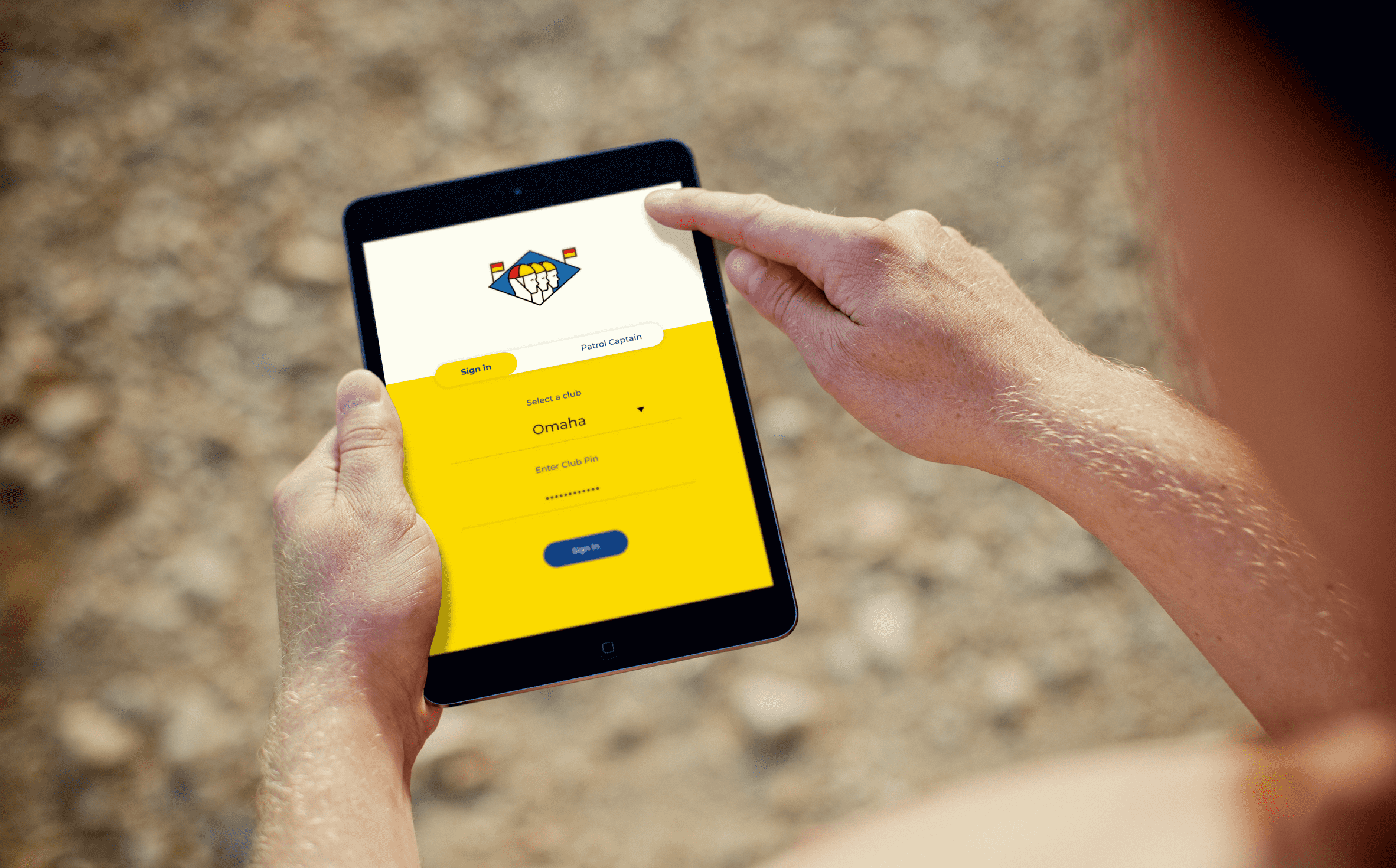Date: October 2019
Technologies Utilised: vuejs, nodejs, firebase, flutter, google cloud
Digital Lifeguard streamlines operations for Surf Live Saving Northern
Surf Life Saving Northern Region is modernising and taking their place as one of New Zealand’s leading emergency services. Improving on-beach data collection was a critical stage in this journey and Lime Digital has developed a digital solution allowing for real-time data collection while digitising outdated and inefficient paper processes.
Background
Surf Life Saving Northern Region (SLSNR) covers the largest surf lifesaving region in New Zealand, supporting 17 surf clubs from Raglan to the Far North. Throughout the summer months these lifeguards protect New Zealanders by carrying out surf rescues, while also assisting with medical events such as bee stings and heart attacks. SLSNR funding is allocated to the clubs based on beach users and incident levels; data which is collected via incident forms. The paper system relied on lifeguards filling forms at the end of shifts to capture information from incidents throughout the day.
Project Scope
While digitising paper forms was the primary objective, Lime Digital proposed that this was an opportunity to capture more data and connect to SurfCom, the SLSNR communication and co-ordination headquarters at the Auckland Marine Rescue Centre, in real time. SLSNR wanted an application that enabled fast and accurate data collection with a simple User Interface to optimise the user input experience. The application needed to automate as many fields as possible while maintaining data integrity, and introduce new data fields not available on paper forms, including images, weather conditions and water quality. Lime Digital’s proposal was to create electronic and dynamic forms, connected to an online, secure database, forming a powerful data repository for real-time and historical data analysis. The data would be presented in real-time on a customisable dashboard where “by exception” reporting or user generated reports can be generated by specific users.
Design process
User uptake was critical to the success of the project, so designing an application that could easily be used by everyone from teenage rookies to experienced veteran lifeguards was crucial. Lime Digital held a workshop employing User Journey Mapping to understand how incidents occurred on the beach and the SLSNR response. This process informed the design, but also gave SLSNR greater insight into their own processes. To ensure the process captured was accurate for each stage, the workshop included representatives from throughout the organisation, including the lifeguards who work on the beach, operations managers and the head of the SLSNR board. From this workshop Lime Digital developed the incident recording process.
The digital solution
Digital Lifeguard is designed to give SLSNR power to capture a greater quantity and quality of data and create capacity at SurfCom for critical response operations.
Freeing up radio availability
The previous system saw lifeguards across the 17 beaches radio in beach user/visitor/swimmer headcounts to SurfCom every hour. With Digital Lifeguard, crew at each beach enter this data into the application, which SurfCom receives in real time, which frees up the radio channel for more critical traffic, such as emergency response.
Managing staff levels
SLSNR lifeguards are volunteers, and while there are rosters, who is actually on the beach can change. Under the previous system lifeguards manually signed in and out and this information was logged at the end of the day. Lifeguards now sign in on Digital Lifeguard, which means SurfCom has a real time overview of how many lifeguards are at each beach and their skills and experience. This means if the head count reports coming through are high, but lifeguard numbers are low, they can work to get more crew on the beach. Knowing who is on the beach extends further than just numbers. For example, knowing you have an IRB driver on the beach or personnel with certain levels of medical training is essential. There are also limitations according to age, for example lifeguards under 18 cannot attend fatalities. As an example of how this works is an incident that occurred at a beach shortly after crews had left for the day. As SurfCom could see who had been on duty, they were able to make contact and quickly direct them back to the beach.
Incident recording
Digital Lifeguard enables lifeguards on the beach and in the tower to record incidences as they occur. To streamline the process, there are pre-set options, including the type of incident and most common locations for that beach. There is also the option to drop a location pin if the location isn’t included in the pre-sets and space to fill out further details. Safety comes first, so the application is designed to record as much data as possible safely, however if an entry is started and the user is required to join a rescue, it can be completed later in the day. Incidents come through to SurfCom via the live feed and will be used to collate data and statistics throughout the season.
Beach conditions
The app draws information on beach conditions from other providers to show on the user dashboard, but also allows users to enter additional data on conditions.
Challenges
For data to be collected in real time, devices need to be connected to a network. Connectivity across the beaches in the region is inconsistent, so the application design/development/architecture ensures that the application works offline and will back up once connected – usually at the end of the day. While this means those beaches will not be able to provide real time data it ensures that data from these locations is still accurately collected and contributes to overall data collection.
Outcomes
The key metrics for success were user adoption, the value of the data collected for planning and funding within the organisation, and improved workflow for lifeguards.


